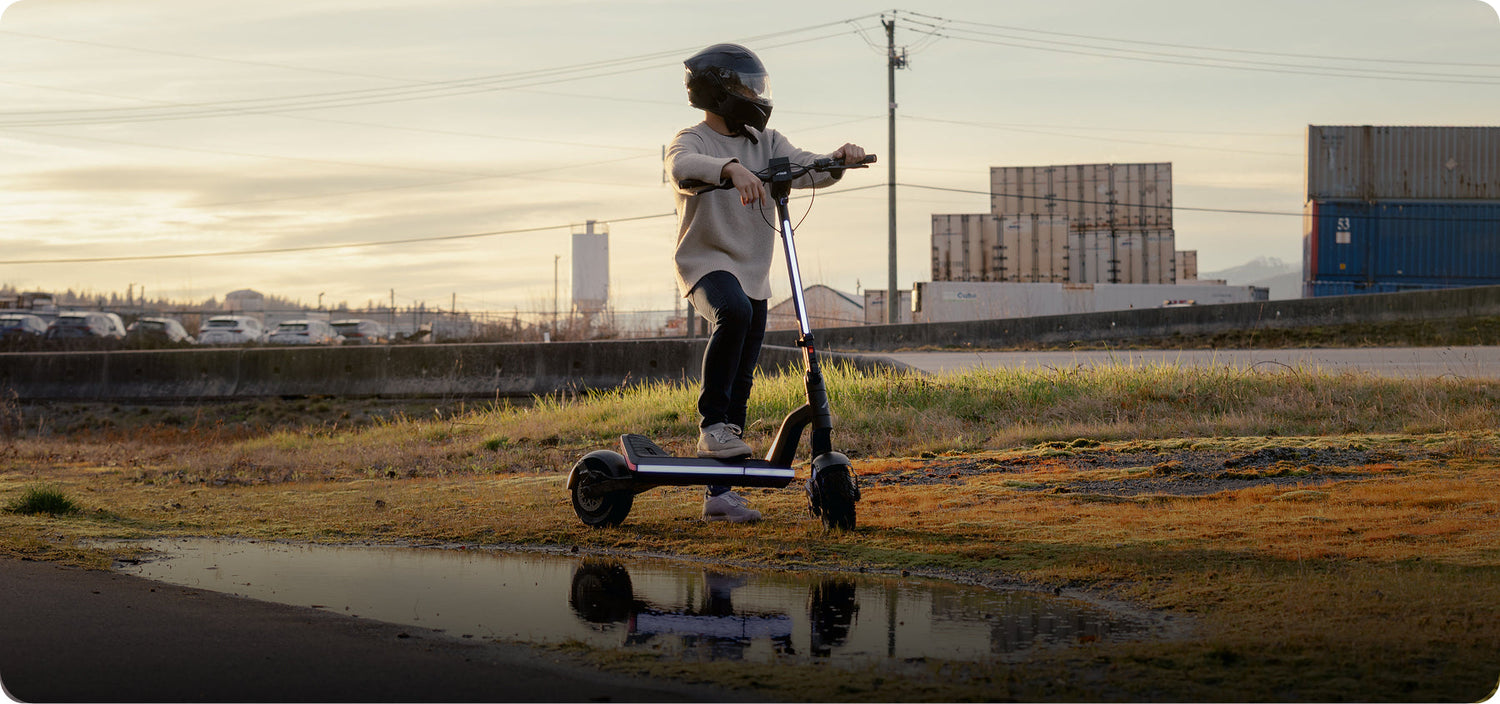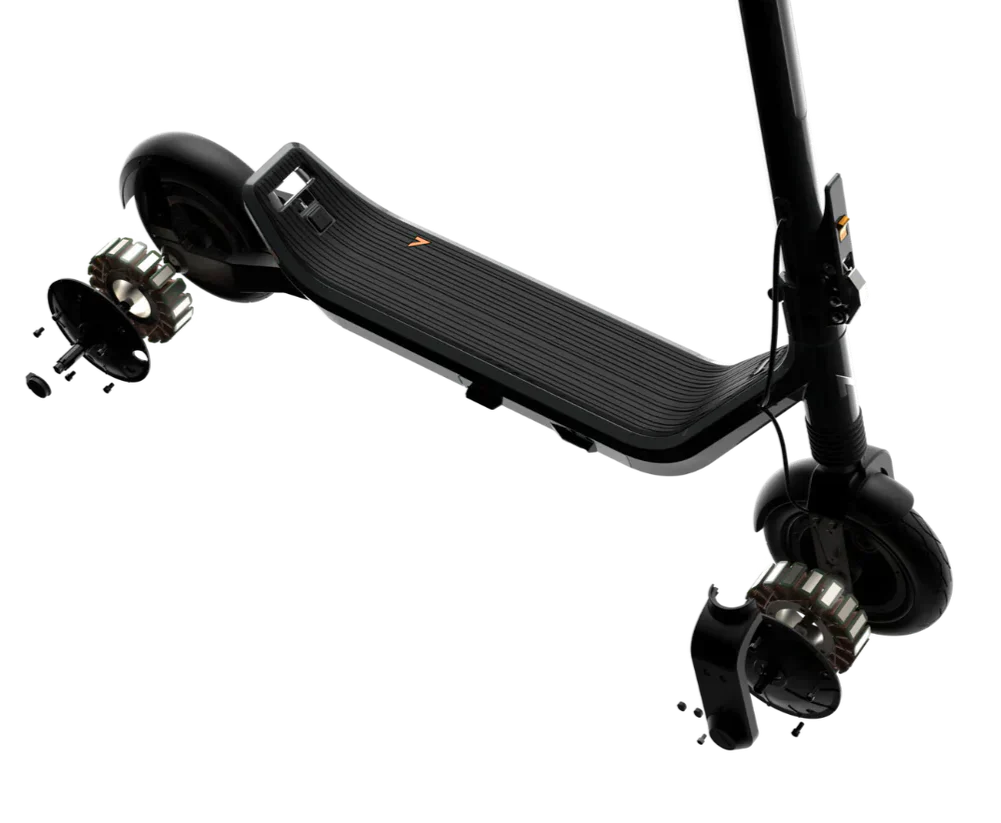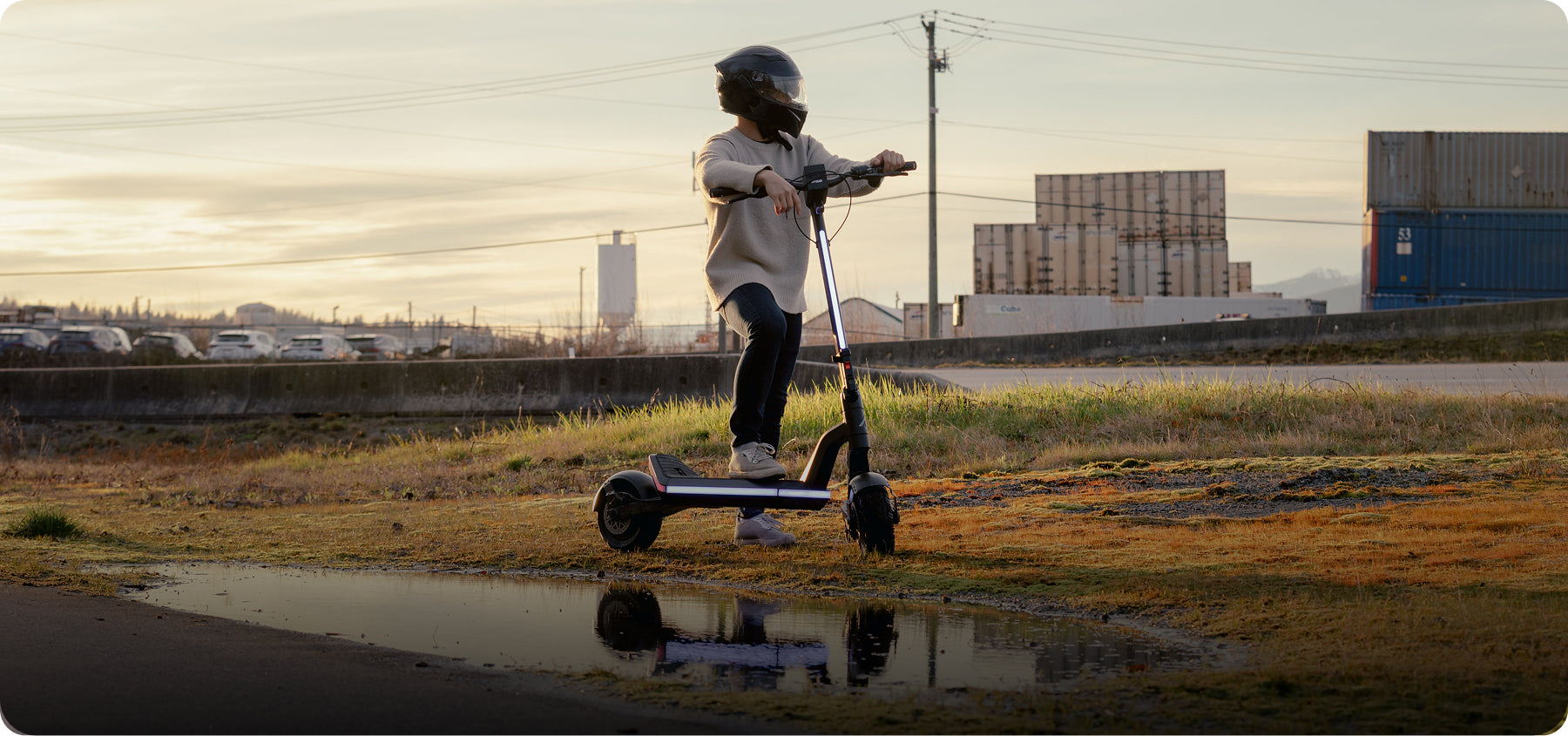If you have a scooter, then you’ve probably gone through that moment where you saw the range on the box and thought — “Wow, that’ll last me all week” — only to find out it barely makes it across town at full speed? And if you’re looking for a new scooter - then you’ve surely noticed that similarly specced scooters promise a different range!
In this breakdown, we’re diving into what advertised scooter range actually means, why real-world results fall short, and how to choose the right battery capacity for your riding habits.
Whether you’re commuting, cruising, or just shopping around — this is the electric scooter range reality check no one else gives you.
The Range Numbers Are… Optimistic
Let’s get this out of the way: advertised range is almost never what you’ll get in real life.
That “up to 40 miles” number on the box? It’s usually based on lab-style conditions:
-
130-pound rider
-
Flat terrain
-
Warm (but not too warm) temperatures
-
Constant speed (around 15 km/h)
-
Eco mode
-
No stops
-
No hard acceleration
In other words, a scenario that barely exists in the real world.
In reality, most people ride faster, weigh more, face hills, deal with stop-and-go traffic, and ride in all kinds of weather. That’s why real-world range can be 30 to 50% lower than advertised.
So, if a scooter claims 64 km of range, expect more like 38–45 km under normal conditions.
Crazy? Yes. Misleading? Only if it’s not communicated properly.
That’s why at Apollo, we make it a point to share mileage estimates based on ride mode. It’s not a perfect science, but it’s a step toward giving you a more accurate, real-world understanding of what to expect. Transparency matters — and we’re doing our best to lead the way. So far, we’ve been able to integrate it to our Apollo Go and Phantom communications - but it is our objective to provide this for all our scooters.

What Actually Affects Range?
Let’s break down the five biggest factors that affect your battery life in real-world riding. And some quick tips on what you can do to max your scooter range.
1. Speed
Speed is the #1 range killer. Not because your scooter can’t handle it—but because of aerodynamics.
As you go faster, wind resistance grows exponentially, and your motor has to work much harder.
-
At 25 km/h, you might use 14 Wh/mile.
-
At 35 km/h, that jumps to 20–22 Wh/mile — a 50% increase for just 10 km/h more.
The fix?
Slow down just a little. Even 5 km/h less can add miles to your ride without noticeably changing your commute time.
2. Rider Weight
Most scooters are tested with a 150–165 lb rider. If you weigh more, the motor and battery need to work harder—especially if your scooter has a smaller motor.
Heavier riders may experience:
-
Slower acceleration
-
Less range
More battery drain on hills
Real-world impact? Expect 10–25% less range if you’re above the standard test weight.
3. Terrain
Flat roads are ideal. But add hills, and your battery starts to sweat. Even small inclines can sap energy:
-
A half-mile hill with a 5% grade can eat up 10% of your battery.
-
Frequent elevation changes = significantly lower range.
Regenerative braking helps on the way down, but it doesn’t fully offset what you lose going up. Riding in a hilly area? Choose a scooter with a bigger battery than you think you need.

4. Stop-and-Go Riding
City riding = frequent stops and starts.And every time you accelerate from zero, you draw a huge burst of power.
Our tests show that riders in stop-and-go traffic saw 15–25% lower range than riders cruising steadily at the same average speed.
What helps?
-
Enable kick-to-start mode
-
Use cruise control when possible
-
Accelerate gently from stops
These small tweaks can make a big difference in efficiency.
5. Temperature
Batteries are picky about temperature. The ideal range? 15–25°C (60–75°F).
-
At 5°C (41°F), range drops by 15–25%
-
Below freezing, range drops even more, and charge times increase
Tip: If you ride in colder climates, store your scooter indoors and give yourself extra range buffer when planning trips.
Watt-Hour: What is that and why it matters
Here’s the number that really matters when comparing scooters: watt-hours (Wh).
Watt-hours = battery capacity = actual energy available.
If there’s one number that you NEED to keep your eyes open for is this one. It’s a far better indicator of range than any "miles per charge" promise.
So if you’re looking for a new scooter (or just got one) - look at the battery size and you’ll have a better idea of the real range your scooter can give you and how it compares to batteries with more capacity (under similar situations):
-
500Wh = 19–24 km
-
1000Wh = 40–48 km
-
1200Wh+ = high-performance, long-distance riding
But remember: motor size, tire type, and controller tuning also affect how far that battery gets you.
How Much Range Do You Really Need?
It all comes down to this question. Most riders that we talk to before buying a scooter are always looking for more range because they think they’re going to go further (and faster). But based on thousands of recorded rides, we can confidently say that you won’t be travelling as far as you think you will:
-
The average round-trip ride is under 12 km
-
Even frequent riders rarely go beyond 24 km per day
Use this rule of thumb:
-
Commutes under 8 km each way → 500–700Wh
-
Moderate speed or distance → 800–1000Wh
-
Long rides or steep terrain → 1200Wh+
And always add a 30% buffer between the advertised range and what you’ll actually get.
Before You Buy: What to Remember
✅ Think twice before buying more range than you need – bigger batteries cost more and add weight.
✅ Prioritize battery size (Wh) over speed or top-end specs.
✅ Check real-world reviews, not just spec sheets.
✅ Know your habits – speed, weight, terrain, and climate matter.
Final Thoughts
Scooter range isn’t a lie — but it’s rarely the full truth either.
The key to finding the right electric scooter is to understand your riding style, look beyond the marketing claims, and build in a buffer for real-world conditions.







